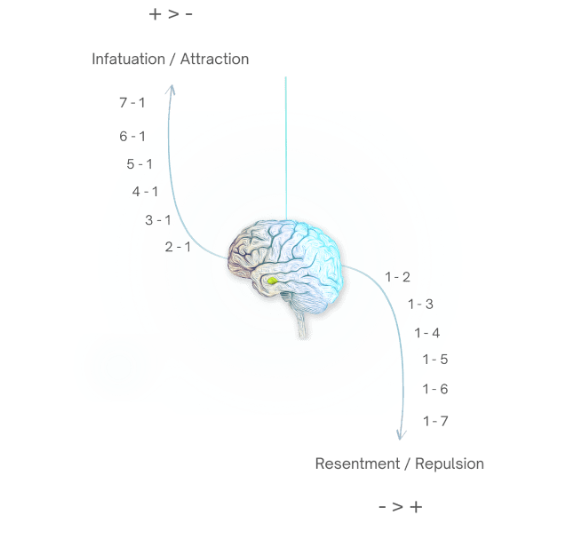Systems 1 v Systems 2 Thinking
Understanding Performance
The enhancement of mental performance is now achievable with a precision paralleling that of physical training.
High-Performance Behaviors and Systems 1 V Systems 2 Thinking
Enhancing physical performance through targeted processes has become a mainstream concept. Similarly, mental performance can be dramatically improved through comparable processes, though this approach is less widely recognised and utilised than in physical training.

Systems 1 thinking v Systems 2 thinking
Two key brain regions significantly impact our performance, leading to what’s often termed as System 1 and System 2 thinking.
System 1 thinking – rooted in the Amygdala or “Animal Brain,” governs primitive seek and avoid based behaviors. It is the driver of erratic and inconstant performances and progress. This region of the brain is activated by highly imbalanced ratios of perceptions (all bad, no good, all good no bad, all support no challenge, all challenge no support etc). It is responsible for:
- Prioritizes immediate pain avoidance and short-term gratification, not strategic athletic goals.
- Leads to quick, emotional reactions rather than calculated responses.
- Unsuitable for long-term, focused athletic planning and execution.
- Generates memories based on fears and desires, affecting subconscious athletic behavior.
- Causes reactivity and emotional vulnerability, detrimental to consistent athletic performance.

System 2 thinking – stems from the Pre-frontal cortex, the brain’s most advanced area. When we have balanced perceptions (a balanced mind) and are focused on a meaningful objective there is an increase in blood flow, oxygen and glucose to this region of the brain. Consistent efficient and effective performance are only possible when our thinking is rooted in the pre- frontal region. This area of the brain is responsible for:
- Long-term strategic and tactical thinking and actions.
- Overrides the Amygdala’s influence, ensuring rational decisions aligned with meaningful objectives.
- Regulates emotions related to pleasure seeking and pain avoidance for more efficient decision-making.
- Sustains focus on selected goals, countering impulsive behaviors driven by immediate gratification.
High-Pressure Environments And Falling Into Systems 1 Thinking
1. No cause bigger than the win – When players and teams perceives that winning is “all positive and no negative” an imbalanced ratio of perception is registered in the brain and an equal and opposite fear is born. This fear/fantasy dynamic drops the brain into the pleasure seeking, pain avoidance amygdala. Seeking prey (life, survival) avoiding predator (death, survival). Winning = life, losing = death. This is why we can see uncharacteristic decision making and break down of tactics and principles in a “winner takes all” competition.
2. A “good performance” v an efficient & effective performance – How a player defines or measures their performance is of fundamental importance when it comes to their ability to remain in systems 2 thinking. Every player has a definition whether they know it or not.. The vast majority of definitions are breeding crowds for uncertainty and the fear/fantasy dynamic which greatly hinders their ability to consistently perform when it matters.
3. How a player measures improvement throughout the season – This is especially important for young players or players who mistakenly label themselves as “confidence players”.
When players oscillate between thinking they are playing well to underperforming and back again they are rooting themselves in systems 1 thinking.
The perceived uncertainty in their mind about an unstable improvement profile initiates the fear/fantasy dynamic. They start running towards a fantasy performance in the future and running away from the painful nightmare performance triggered by the past. In this state they find it difficult to be present and tactical, strategic and process orientated.
4. The double edge sword of Tactical Detail – Players interpretations of what is required needs thorough examination. Any uncertainty in the minds of individuals can trigger systems 1 thinking in key moments. A process to find the gaps in players knowledge is a wise use of time.
5. Black swan events – In high pressure situations when something completely unexpected happens the uncertainty in that moment has the potential to drop individuals/ team and management in the fear/fantasy dynamic and into the ungovered mind. In these moments performances can collapse unexpectedly due to impulsive and uncharacteristic, systems 1 decision-making.
